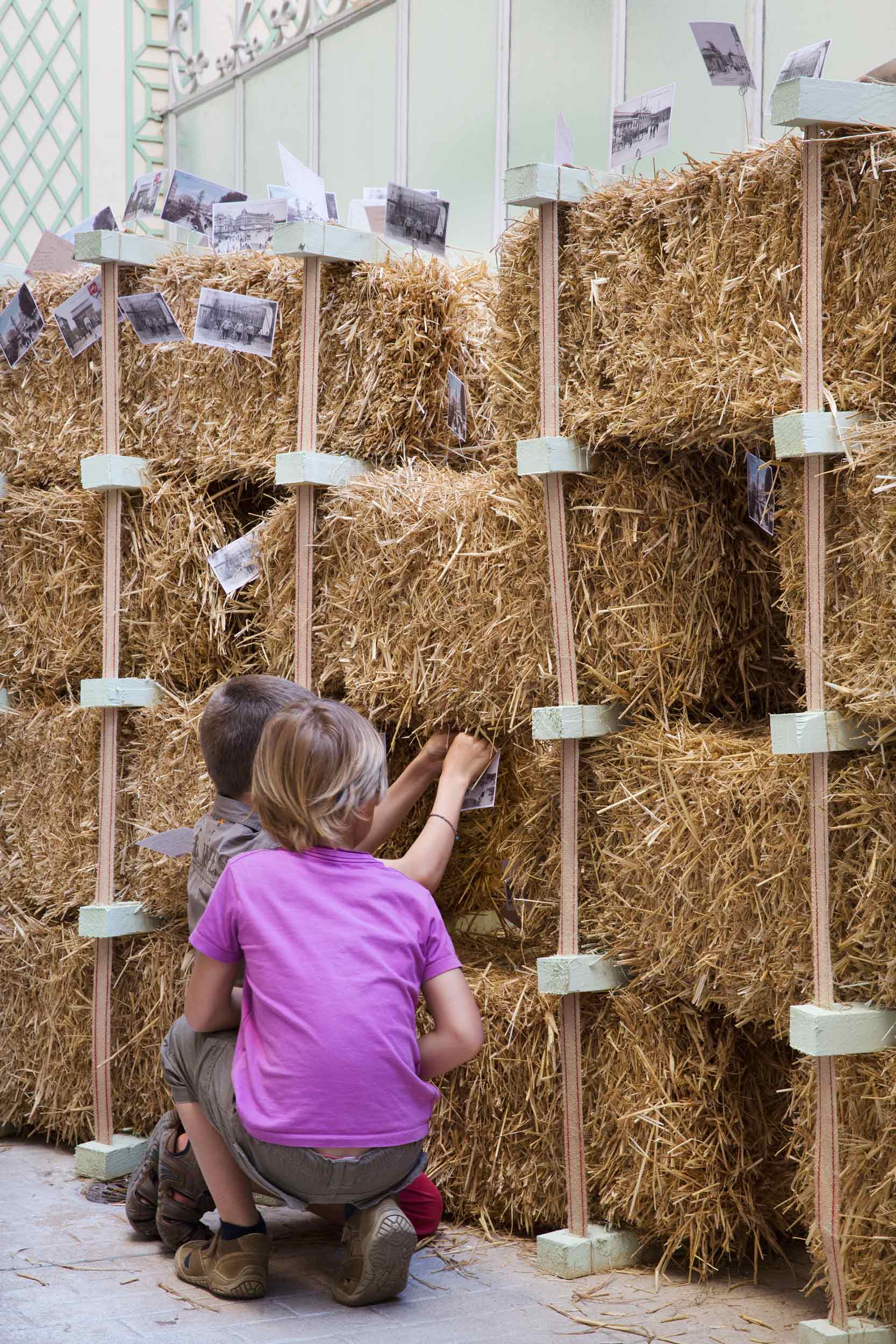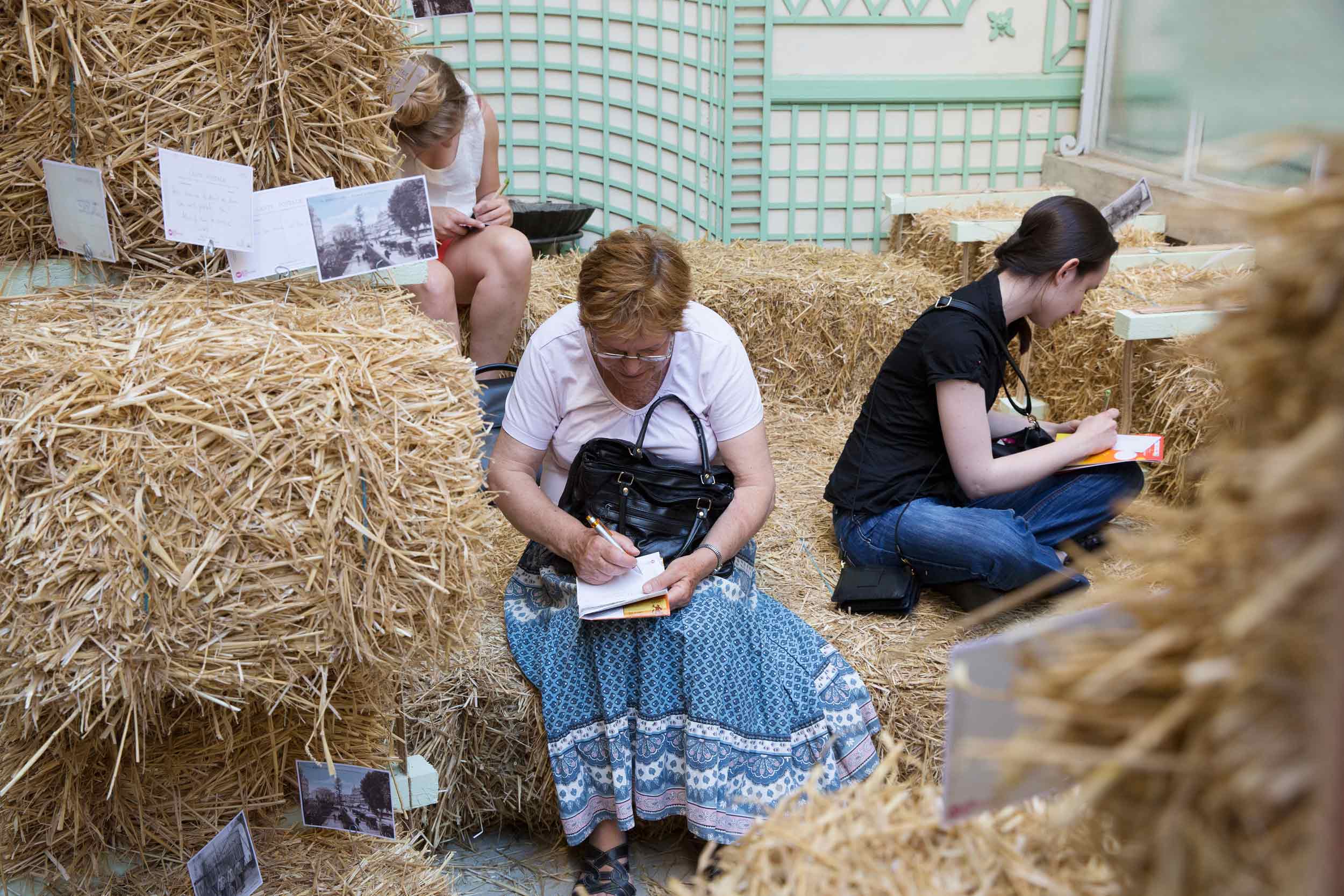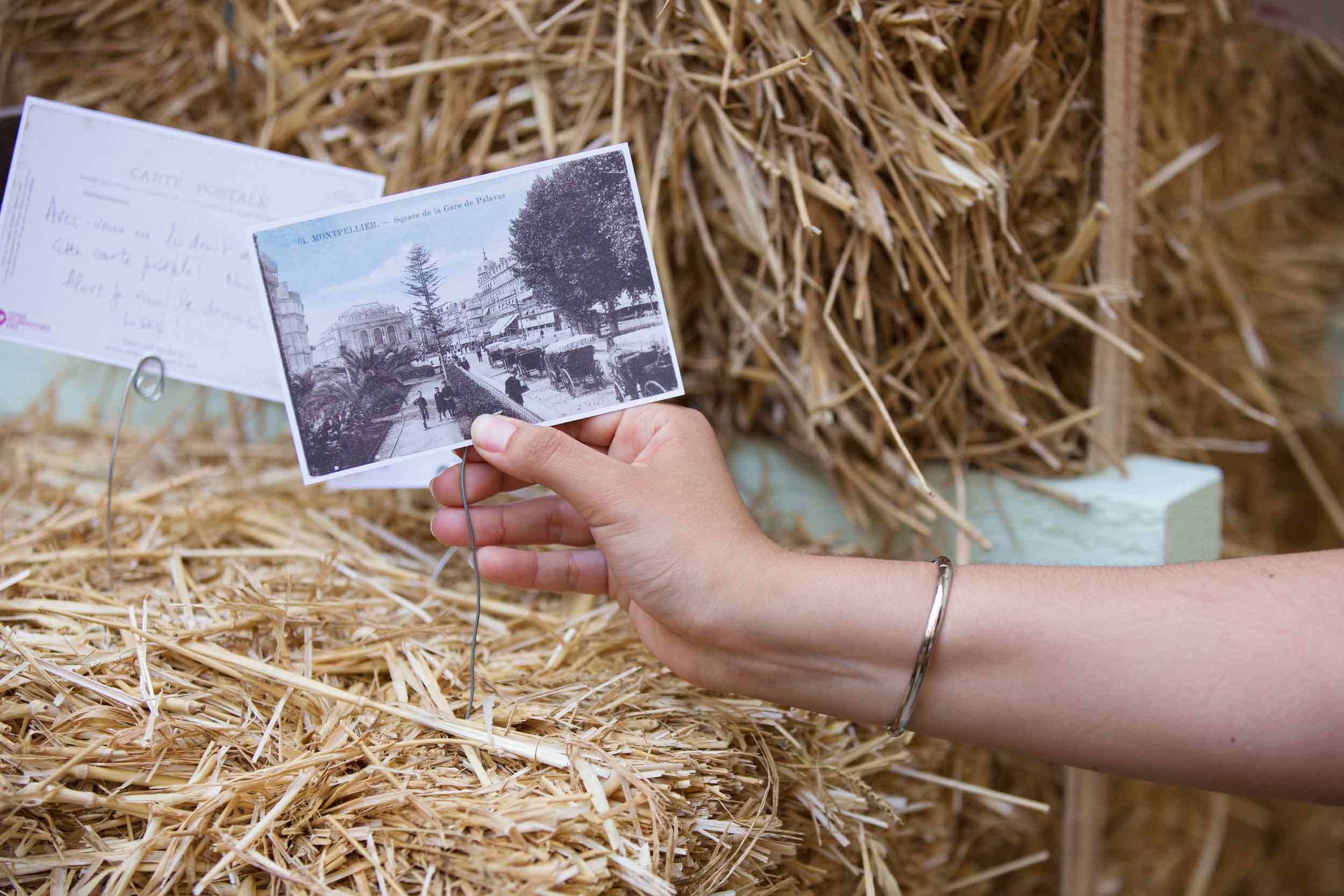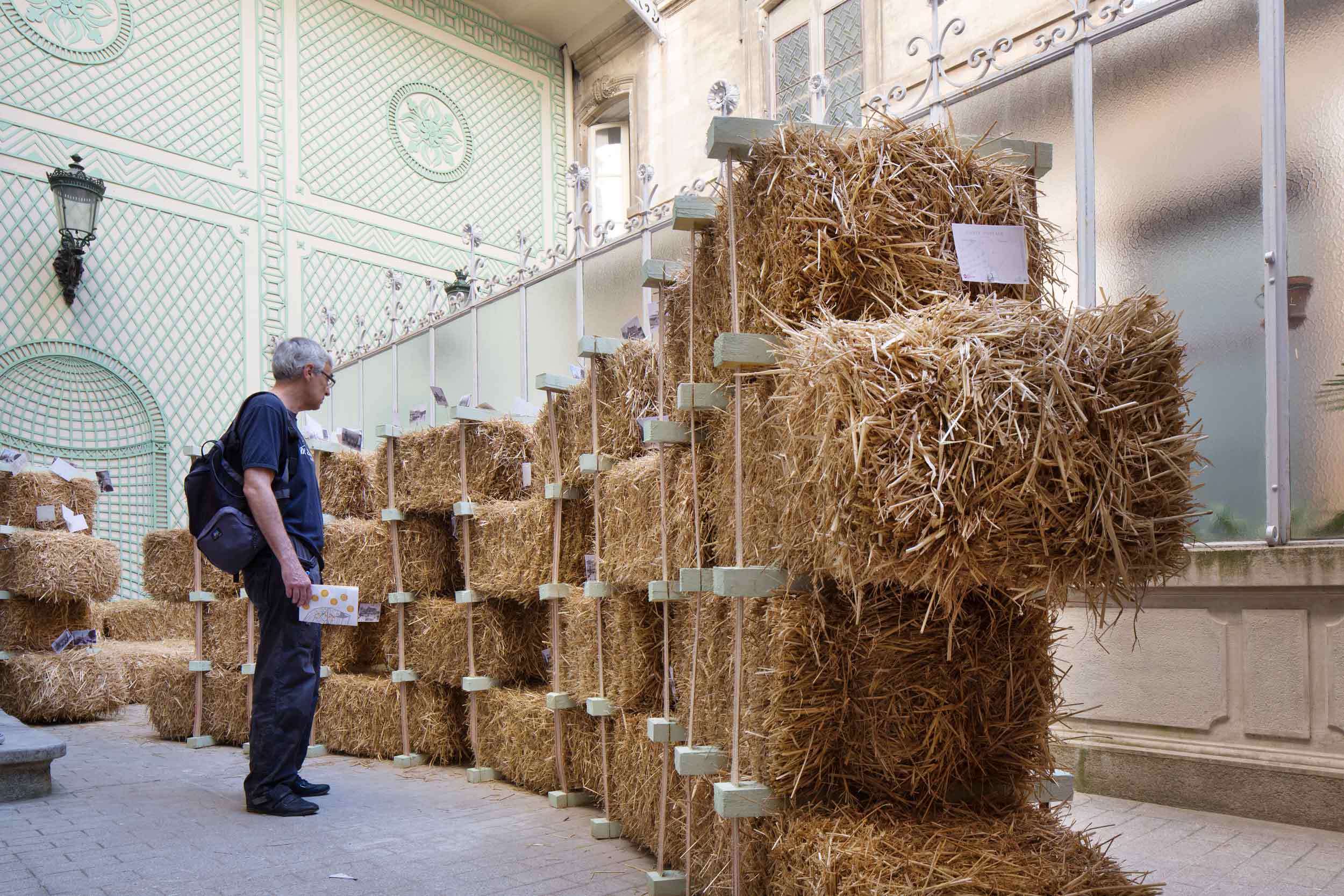Lucien Puech
Paris // France
Diplômé architecte DPLG en 2007, Lucien Puech collabore depuis avec des agences d’architecture de renommée internationale telles que Miralles & Tagliabue à Barcelone, RPBW et Kengo Kuma Associates à Paris. Durant trois ans, en tant que chargé d’étude de l’Opéra d’Athènes, la simplicité et la force expressive du coup de crayon de Renzo Piano l’enthousiasme. Il développe en parallèle, auprès de particuliers et à l’occasion de concours d’idées une démarche plus personnelle. Ses premières esquisses sont un pavillon d’exposition mobile expérimental pour le World of Bamboo et la reconversion d’un loft à Paris. Tirant son inspiration de lointains voyages, son travail vise à construire de beaux objets à habiter, lieux de tous les possibles, cadre d’un hédonisme généreux et coloré. Le FAV est l’occasion pour lui réaliser une première scénographie éphémère.
A professional architect since 2007, Lucien Puech has collaborated with world-renowned firms such as Miralles & Tagliabue in Barcelona, as well as the Parisian firms RPBW and Kengo Kuma Associates. As the lead architect of the Athens Opera Hall studies, Lucien was afforded the opportunity to work in close collaboration with Renzo Piano. While working in RPBW he learned that even highly complex projects, when expressed with simple words and enthusiastic sketches, always win over public. In parallel with these projects Lucien has also developed his own practice, working both with private clients, as well taking part in idea competitions. His first project was an experimental mobile exhibition pavilion for the World of Bamboo and a loft reconversion in Paris. Inspired by travel memories, his work aims to construct charming objects to live in, places of freedom, often framed in a generous and colorful hedonism. The FAV is an occasion for him to realize a first ephemeral stenography.
![]()
Pour la première fois, une architecture vive investit l’atmosphère feutrée de la cour de l’hôtel Sabatier d’Espeyran. C’est une construction de bottes de paille telle qu’on en croise remorquée par les tracteurs sur les départementales. Un mur en dégradé de paille alterne pleins et vides, pesanteur et légèreté grâce à des pièces de bois intercalaires qui sanglent les ballots. Témoin de l’image du Montpellier d’autrefois, des cartes postales sont rééditées et offertes comme médium de transmission. Objets à voyager, elles nous évoquent le temps des voitures à chevaux et invitent les visiteurs à la nostalgie. Au fond de la cour, le mur se transforme en cabinet d’écriture où l’on peut s’asseoir ou s’allonger le temps d’inscrire un message destiné au promeneur suivant. Un moment de pause propice au souvenir et à la contemplation de la superbe façade du musée Fabre.
For the first time, the Festival Architectures Vives offers an opportunity to make the most of the hushed atmosphere of the Hôtel Sabatier d’Espeyran. The Museum of Decorative Arts, part of the famous Museum Fabre, hosted this architecture installation in its small 10 per 3.5 meters courtyard. “Don’t tell my horse” is a scenography made out of straw bales similar to those one can find towed by tractors in the countryside. Based on the festival’s topic “Reminiscence”, the work invites visitors to remember with nostalgia the time of horse carriages and to consider the evolution of cities’ landscape since. This is a wall construction, made up with 50 straw bales tied together by natural jute webbings and wood spacers, alternating full and empty, lightness and weight. People are welcome to write a memory on postcards picturing old Montpellier while comfortably seated on a straw couch, inspired by its odor and a sound record of horses. More than 850 messages were pinned on the wall with a metal string during the festival. The installation creates a surprise by the use of this rustic material, emblematic of the self-construction, in such a delicate setting while also offering a rest in the exhausting city.
![]()
![]()
![]()
![]()
A professional architect since 2007, Lucien Puech has collaborated with world-renowned firms such as Miralles & Tagliabue in Barcelona, as well as the Parisian firms RPBW and Kengo Kuma Associates. As the lead architect of the Athens Opera Hall studies, Lucien was afforded the opportunity to work in close collaboration with Renzo Piano. While working in RPBW he learned that even highly complex projects, when expressed with simple words and enthusiastic sketches, always win over public. In parallel with these projects Lucien has also developed his own practice, working both with private clients, as well taking part in idea competitions. His first project was an experimental mobile exhibition pavilion for the World of Bamboo and a loft reconversion in Paris. Inspired by travel memories, his work aims to construct charming objects to live in, places of freedom, often framed in a generous and colorful hedonism. The FAV is an occasion for him to realize a first ephemeral stenography.

Pour la première fois, une architecture vive investit l’atmosphère feutrée de la cour de l’hôtel Sabatier d’Espeyran. C’est une construction de bottes de paille telle qu’on en croise remorquée par les tracteurs sur les départementales. Un mur en dégradé de paille alterne pleins et vides, pesanteur et légèreté grâce à des pièces de bois intercalaires qui sanglent les ballots. Témoin de l’image du Montpellier d’autrefois, des cartes postales sont rééditées et offertes comme médium de transmission. Objets à voyager, elles nous évoquent le temps des voitures à chevaux et invitent les visiteurs à la nostalgie. Au fond de la cour, le mur se transforme en cabinet d’écriture où l’on peut s’asseoir ou s’allonger le temps d’inscrire un message destiné au promeneur suivant. Un moment de pause propice au souvenir et à la contemplation de la superbe façade du musée Fabre.
For the first time, the Festival Architectures Vives offers an opportunity to make the most of the hushed atmosphere of the Hôtel Sabatier d’Espeyran. The Museum of Decorative Arts, part of the famous Museum Fabre, hosted this architecture installation in its small 10 per 3.5 meters courtyard. “Don’t tell my horse” is a scenography made out of straw bales similar to those one can find towed by tractors in the countryside. Based on the festival’s topic “Reminiscence”, the work invites visitors to remember with nostalgia the time of horse carriages and to consider the evolution of cities’ landscape since. This is a wall construction, made up with 50 straw bales tied together by natural jute webbings and wood spacers, alternating full and empty, lightness and weight. People are welcome to write a memory on postcards picturing old Montpellier while comfortably seated on a straw couch, inspired by its odor and a sound record of horses. More than 850 messages were pinned on the wall with a metal string during the festival. The installation creates a surprise by the use of this rustic material, emblematic of the self-construction, in such a delicate setting while also offering a rest in the exhausting city.




